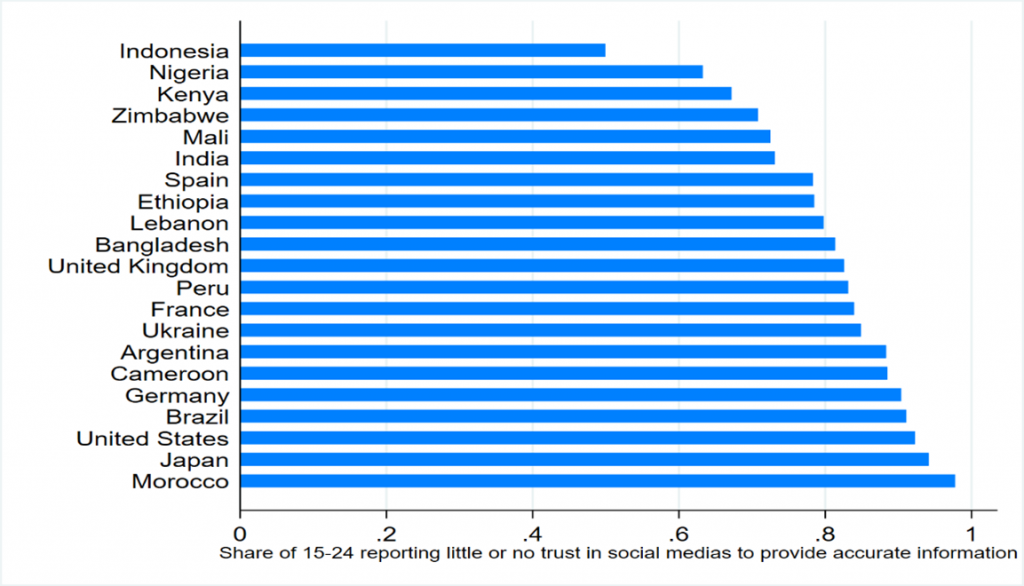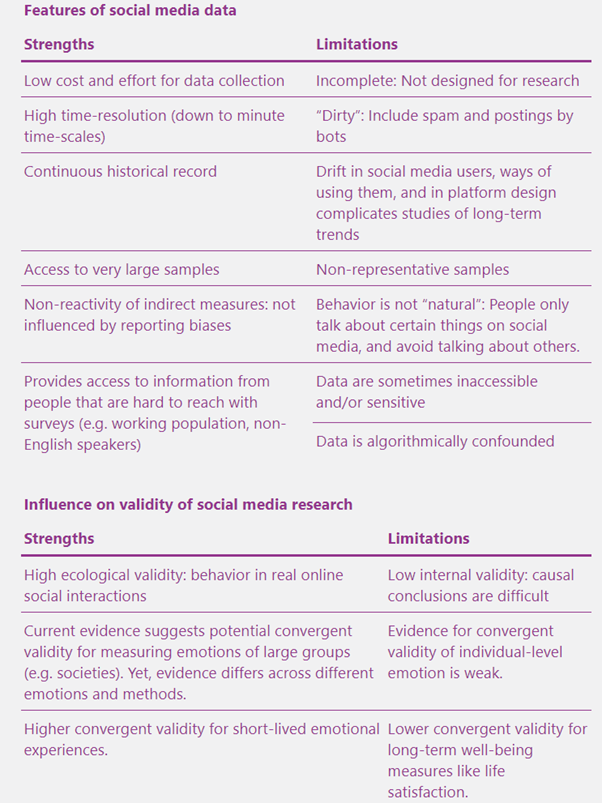The recent EYES (Emerging Youth Early Signs) 2021 report published by SKEMA PUBLIKA used Twitter information to uncover shared sentiments among young people of different countries. For example, they highlighted strong negative feelings towards social media in Brazil, China, and the United States.

An immediate concern is whether this Twitter-based analysis captures the concept (what) that the researcher seeks to assess and the population (who) that the researcher wishes to cover. In other words, are we certain that the results found are truly associated with the confidence of young people into social media?

One straightforward way to solve this conundrum is to compare the Twitter-based analysis with a traditional representative survey such as the one conducted recently by the UNICEF (the Changing Childhood Project). Reassuringly, it is also in Brazil and the United States that young people have the least trust in social media.
Beyond the EYES report, there is an extensive use of social media as sources of new, unstructured, data. Cortis and Davis (2021) provide a comprehensive of this emerging field of “social opinion mining”. They highlight that the Politics domain is the dominant application era. For example, researchers, policy-makers, think-tanks, and journalists are naturally interested in the prediction of election outcomes.

There remain strong concerns about what social media truly measures, in terms of reliability (is the measure consistent over time), validity (is the measure associated with the construct of interest), bias (could the measurement be distorted by social media practices), coverage (is the population of interest adequately represented), and processing (what is the quality of the lexicon-based or machine-learning-based algorithms). At the same time, traditional survey analyses are expensive, difficult, and time-consuming to conduct, and the topics are pre-defined by the researchers, preventing the detection of emerging trends. Social media analyses do not suffer from these drawbacks, allowing a rapid snapshot of prevalent or new sentiments, which may also be more truthful thanks for example to anonymous sharing.
Furthermore, social media, by their very nature, trigger phenomena of social diffusion and contagion occurring within the social networks that they generate. Hence, it is possible that, despite their potential non-representativeness, social media analysis provides a full topic coverage and represent the opinions of the overall population accurately. Lastly, representativeness may be less of an issue if social media analysis is used to track the phenomenon over time within the same country, and possibly with the same Twitter population.
The World Happiness report 2022, in a chapter devoted to the use of social media to capture emotions offer a very useful summary of the strengths and limitations of the analysis of social media data. Their own analysis indicates that within countries, social media measures for emotions and well-beings are strongly correlated over time with survey data measures. It is still not clear whether the same results would be achieved in looking at level differences across countries.
Overall, survey-based and social media-based approaches are complementary tools, whose pros and cons must be carefully considered depending on the research interests. The EYES report acknowledges some potential drawbacks of their methodology and their lexicon approach could be refined, or replaced by more sophisticated, machine-learning, approaches. Nevertheless, this first report is a valuable step towards understanding what young people think and feel. From another perspective, it can be understood as a consilience exercise by creating a bridge between computer and social researchers.






![[PODCAST] Harry Potter: just like magic, will money disappear?](https://knowledge.skema.edu/wp-content/uploads/2023/10/podcast-harry-potter-money-magic-disappear-270x162.jpg)
